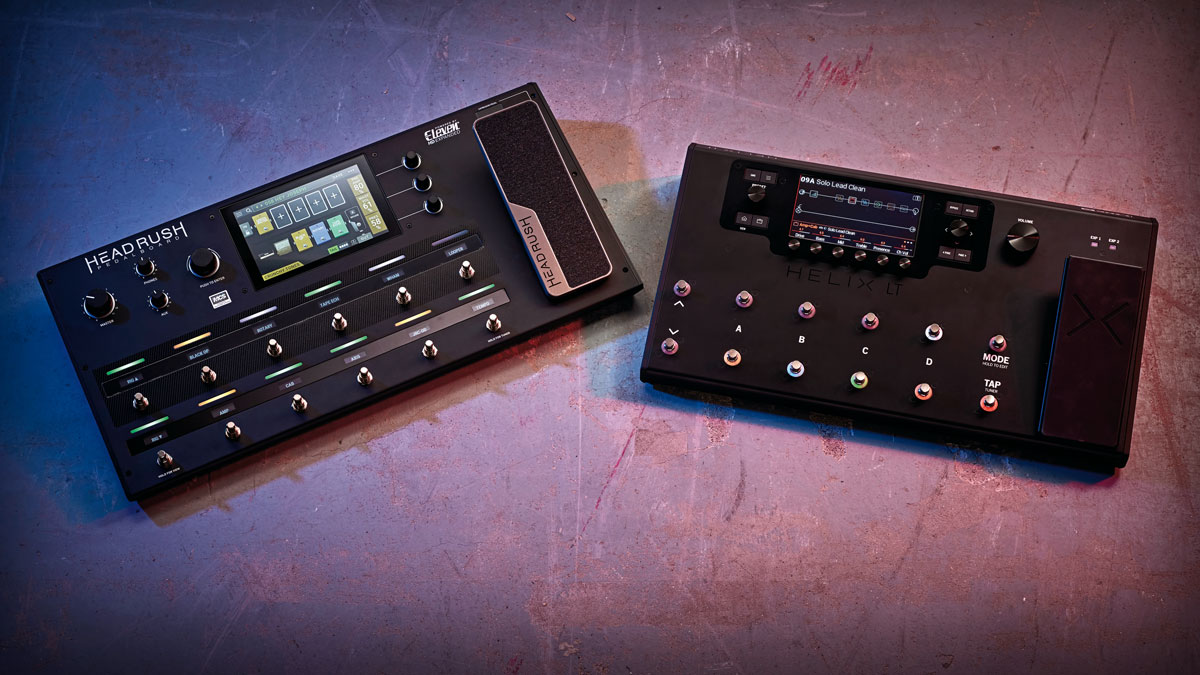Review round-up: pedalboard guitar amps
Inventive pedal solutions from Two Notes, Seymour Duncan, Mooer and BluGuitar
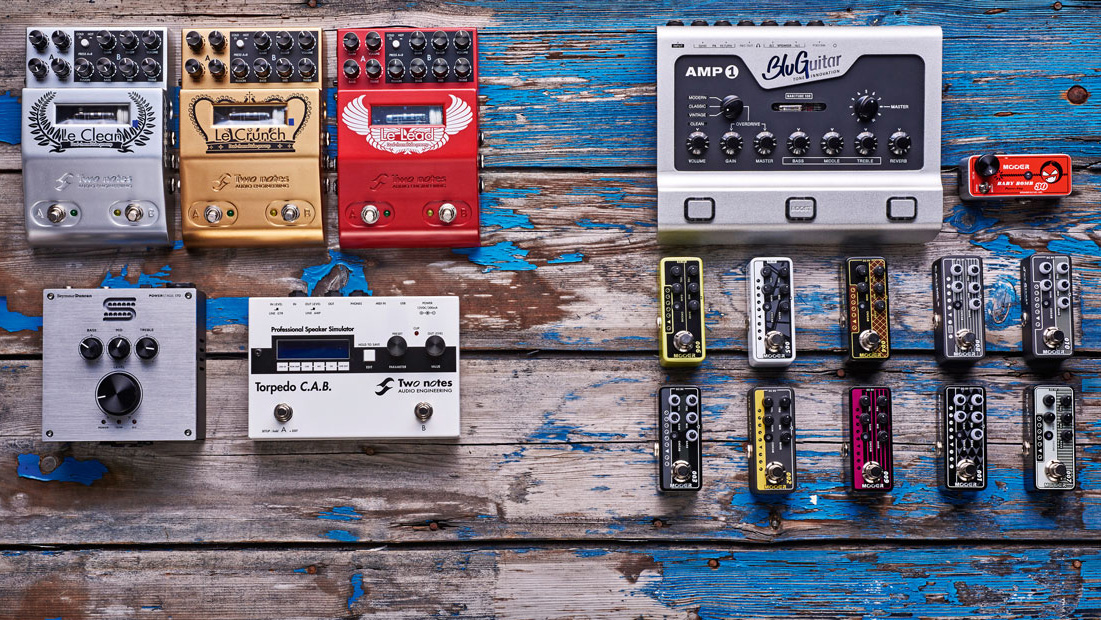
In order to avoid lugging a tube amp around with you for live shows, there are a number of pedalboard amp options available to you.
Small lunchbox-style valve guitar amps are one option you can choose, while lightweight modelling amps, which allow for a direct line to the PA as well as the running of a cab onstage, are another.
On the recording front, meanwhile, there are loadboxes, which mean you don’t need to mic a real cab, amp and cab sims that replicate classics in software, tube amps with their own direct recording outs, and everything in between.
With these developments, you may wonder whether an amp is necessary at all, and if there’s a way of removing it from the equation entirely.
Luckily, there’s now a range of products that allow you to do just this. Some are aimed at recording or going direct to the PA, while others can drive a traditional speaker cabinet if desired.
We’ve picked a diverse range of these units to put through their paces, so whether you need a complete stage and studio solution, or just a solid setup for home jamming and recording, one of these magic boxes is likely to radically simplify your rig.
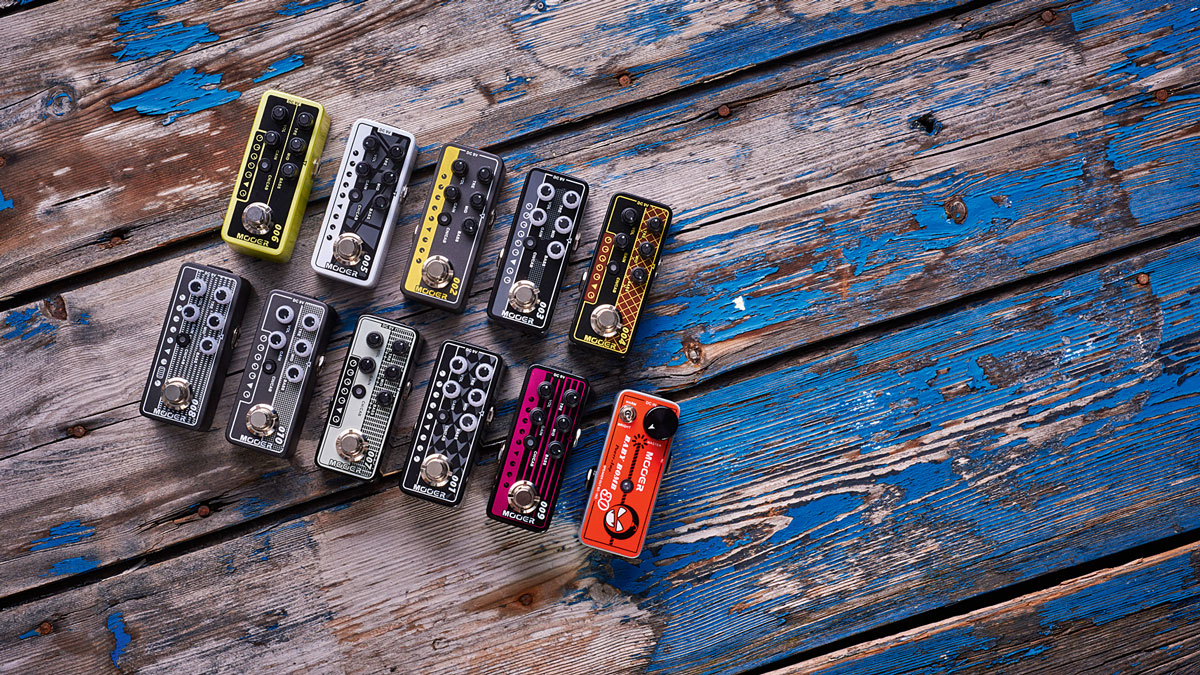
Mooer Micro Preamp Series & Mooer Baby Bomb 30 Power Amp
These are tiny! You can’t be serious...
An amp in a box pedal is nothing new - after all, the earthshaking AmpTweaker line is more or less just valve amp preamps modelled with discrete circuitry. What is new, however, is the diminutive form of these astonishingly small units. They may look cute, but paired with the Baby Bomb 30 power amp, you might blow your neighbours’ eardrums, let alone your own - so treat them with a little caution.
Okay, so how do they sound?
The Fender Blackface model (Regal Tone) comes surprisingly close to a Fender clean tone, while the Vox (Day Tripper) has a similar EQ range to a real Vox, but is difficult to dial in with a classic bright Vox chime.
Out of the more ‘rock’ amps, the Marshall JCM900 model (UK Gold 900) is the most convincing. It saturates nicely with a boost or drive in front, although it does lack clarity when cranked.
In general, the higher-gain amps like the 5150 (Fifty-Fifty 3) and Diezel (Gas Station) are less realistic, although with the gain rolled right back to about 9 o’clock, the 5150 is almost a passable ‘5150 in a box’ distortion sound, even if it lacks the definition and punch of the original amp.
At a glance
Type: Preamp and power amp in micro pedal format
Power: 9V DC centre-negative (Micro Preamps); 24V DC (Baby Bomb)
Key features: Large choice of preamp voices, three-band EQ, EQ toggle on the Baby Bomb 30
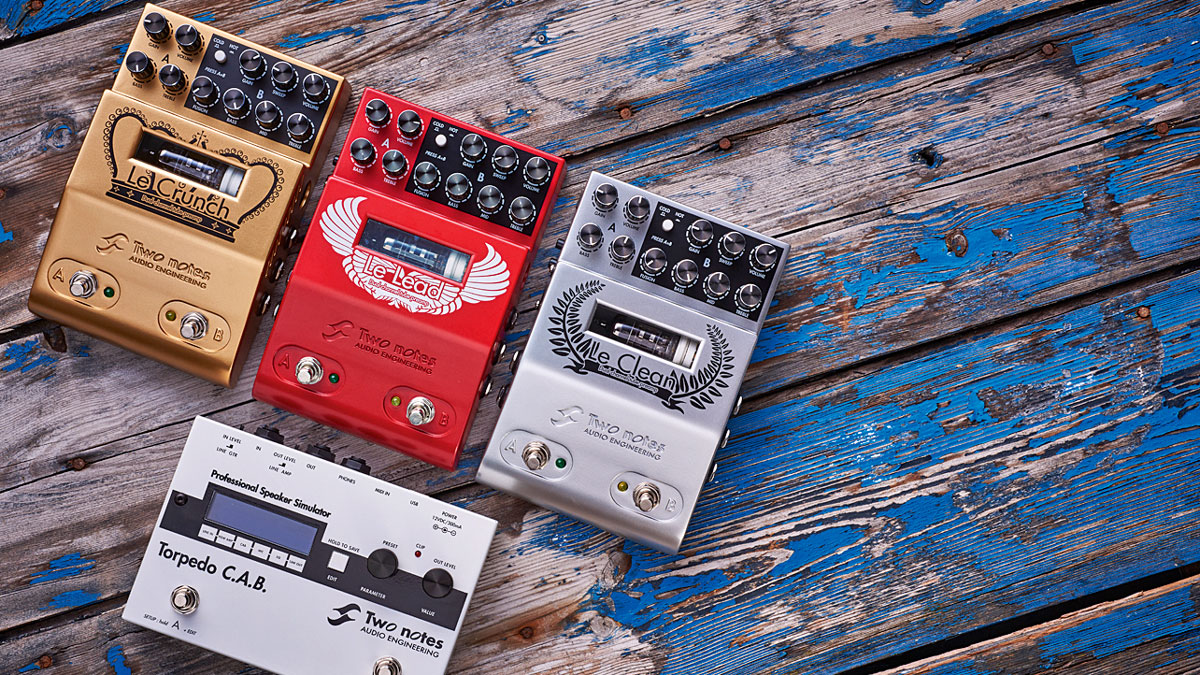
Two Notes Le Preamp & Two Notes Torpedo CAB
How convincing is the Le Preamp series?
All of these preamps have a real valve in them as part of their design, so they all pack a fair bit of wallop and saturation even at lower volumes. Like the amps that they are based on, they have clean and lead channels, though the EQ on the lead channel is better.
What about the cab simulator?
The Torpedo CAB takes a line out from any of the preamps, and applies power amp simulation and the same cabinet simulation found in Two Notes’ high-end Torpedo Live and Torpedo Studio rack units.
The CAB is a hefty piece of kit out of the box, but can also be extended and edited on a PC. A common ‘gotcha’ with this kind of cab simulation is that if you’re not used to the sound of your amp and pedals close mic’d, then you’ll want to edit the presets to move the mic back to give more of a ‘room’ sound.
What’s the difference between the preamps?
The Le Clean is a Fender-voiced preamp, the Le Crunch is Marshall-like, and the Le Lead is a high-gain modern tube amp. All of them have the same control layout and speaker simulation, although not as good as that found in the CAB. They also boast a fusion knob.
At a glance
Type: Preamp, power amp and cab simulation
Power: 12V DC (adaptor supplied)
Key features: Valve-based preamps with a variety of outputs, Torpedo CAB offers studio-grade cab simulation and PC editing
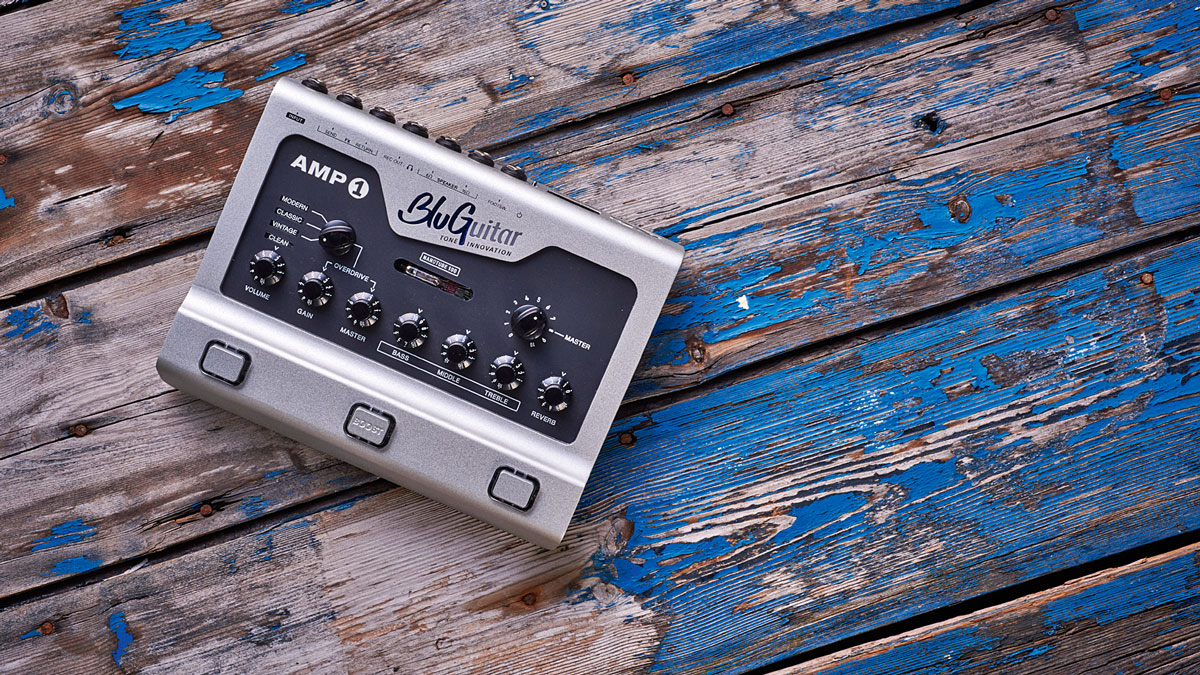
BluGuitar Amp 1
Hasn’t this been out a while?
Yes, but the BluGuitar Amp 1 is still hugely popular in this space, as critical and user reviews will attest. Its main promises are headroom and versatility, with an explicit focus on being able to go toe-to-toe with a 100 watt head, and on that it certainly delivers.
How do the different preamps in the pedal stack up?
The vintage sounds in here are good and the distortion channel in vintage mode has a touch of that familiar Marshall heft. Smashing the front end with a full-range boost pedal results in a pleasant saturated breakup, and rolling the gain up further pushes the preamp into a solid lead tone.
Clean is the easiest guitar tone to model, and as there is a sub-mini tube in the pedal, it should be no surprise that this is the strongest sound in the unit. The modern distortion sound sways dangerously close to fizz territory.
How are the boost and reverb?
The reverb may not be the most feature-laden, but chances are you run your reverb in front of the amp anyway. The boost function is handy for an extra kick, but considering how nicely the Amp 1 responds to having a boost in front of the unit, you’ll probably just use one on your pedalboard instead.
At a glance
Type: Preamp, power amp, cab driver
Power: 100-200V Mains Kettle/IEC lead (supplied)
Key features: Can be used direct for recording as well as drive a cab onstage; powerful and has great headroom
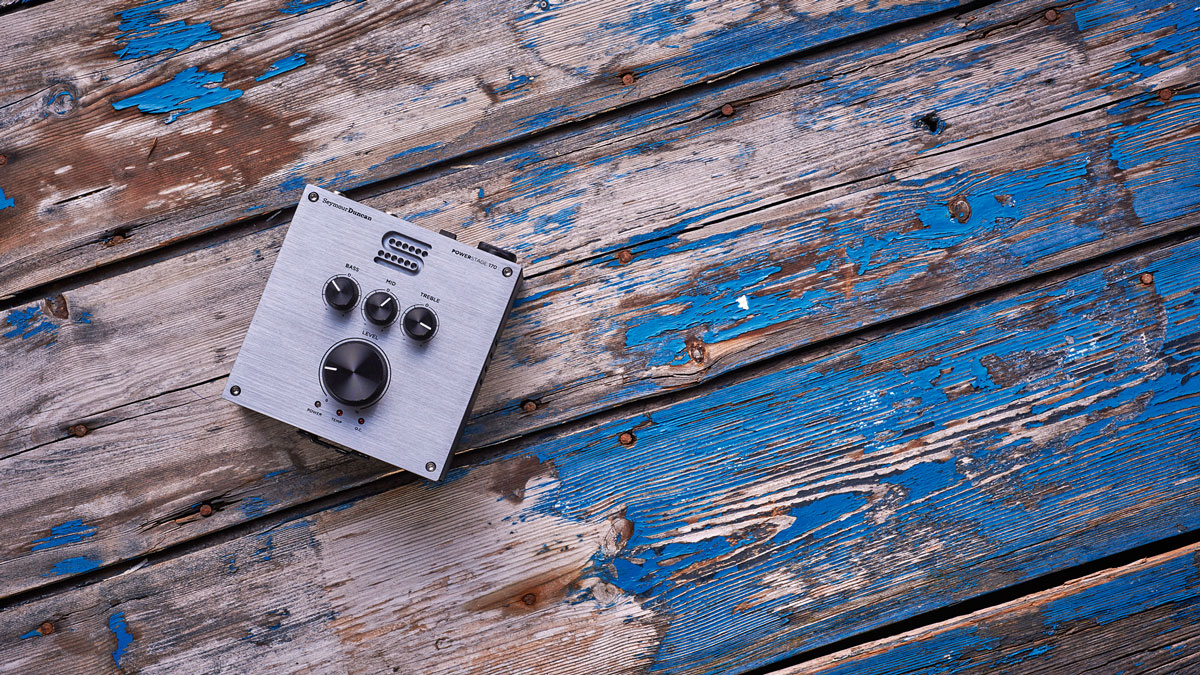
Seymour Duncan PowerStage 170
This seems like a simple option...
Indeed. The logic behind the PowerStage is very much ‘do one thing, and do it well’. Essentially a power amp in a pedal with a simple preamp and a three-band EQ, it’s built like a tank and looks really cool nestled on your board amongst your pedals.
Does it take pedals well?
Designed as a pedalboard amp solution, or a driver to place after a modelling preamp like the Line 6 Helix, the PowerStage handles various distortion pedals thrown at it well. In fact, it even managed some saturation of its own with a boost in front of it and the volume up. The only complaint would be that when pushed, the amp felt tonally dark, meaning the treble control had to be rolled up.
Can you record with it?
If you want to record with it, you’re going to have to use a loadbox with cab simulation like the Two Notes Torpedo Live and the sound is not going to stack up to a full-fat tube head. Or, you could stick a mic up in front of your cab, just as you would with a normal tube amp.
This is clearly more aimed at gigging than studio use and it should be judged accordingly. For the guitarist looking to strip back their live rig to a board and a cab, this could be the silver bullet.
At a glance
Type: Power amp/cab driver
Power: Mains Kettle/IEC (supplied)
Key features: Solid-state class D power amp. Can drive a cabinet for live use; simple interface
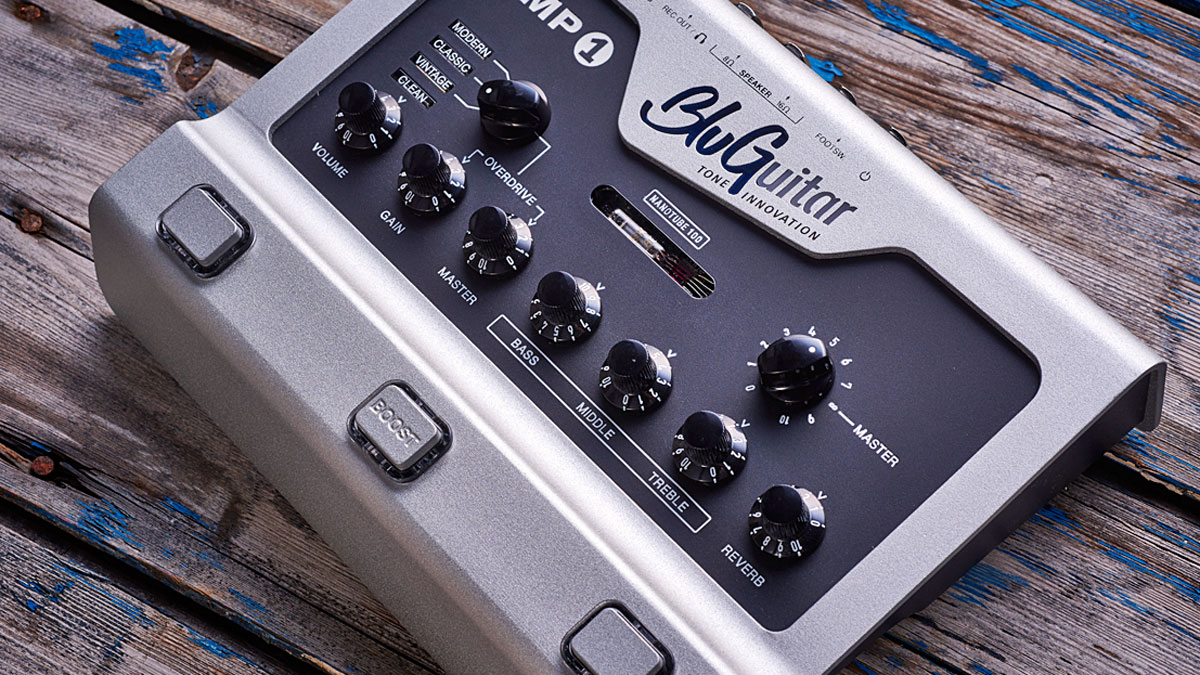
Head to head
The Mooer preamps can be used to DI into a recording interface, but the results when used with a cab are markedly better.
Meanwhile, the PowerStage 170 needs to be used with a speaker cab and can’t be used for direct recording. On the flip side, the Two Notes preamps and CAB can be used for direct recording or run into a mixer and PA for live use, but can’t directly drive a speaker cab.
The BluGuitar sits neatly between these two camps as it can be used for direct recording or used line out to a PA, but can also drive a traditional speaker cab if required.
There’s quite a range of prices between these products, though not quite as great as you might initially think. For instance, the combination of a Mooer micro preamp and the Baby Bomb 30 power amp come to nearly as much as one of the Two Notes Le Preamp pedals, although the CAB adds substantially more to the bill if you want dedicated cab modelling.
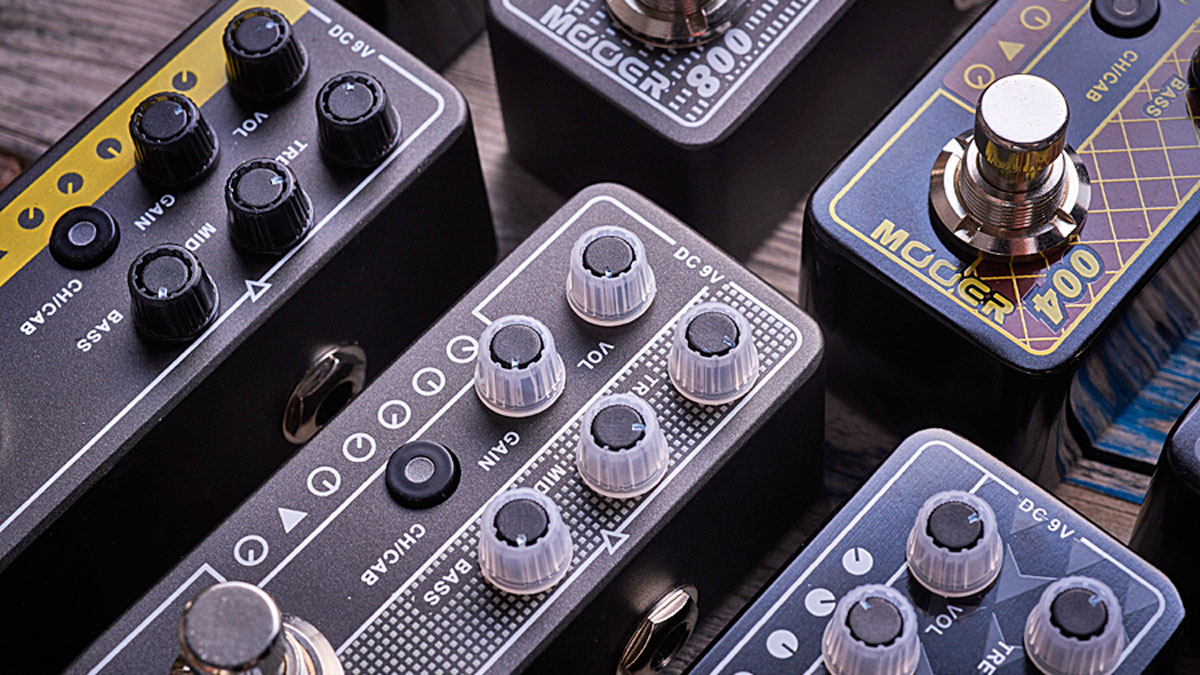
One of the Two Notes preamps with the addition of the CAB is in the same ballpark as the BluGuitar. In terms of sound, it’s the case that you get what you pay for.
The BluGuitar and the Two Notes offer the best sound quality, with the BluGuitar being the best all-rounder for both recording and live use. The combination of the Two Notes preamp and CAB sound consistently the most convincing and is also the easiest to get a good sound out of - but not being able to run a standard cab is potentially a drawback, if you’re anything more than just a bedroom player.
Out of the less expensive units, the PowerStage offers a full-range clean slate to run pedals into, and the combination of Mooer preamp and Baby Bomb 30 is somewhat more characterful by comparison, even if it has a lot less headroom, with just 30 watts to the PowerStage’s 170 watts.
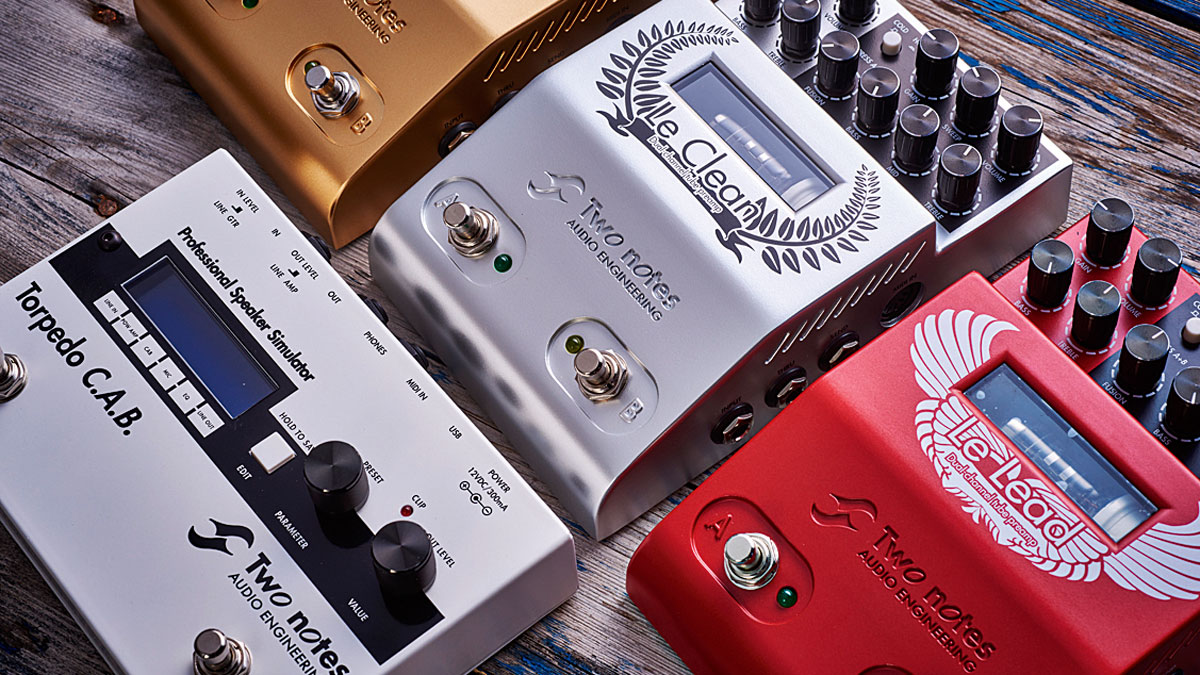
Final verdict
For many players, the fact that you can even consider eliminating an amp from your setup to have just a pedalboard is astonishing.
That the sounds on offer from these pedalboard amps are so good is equally as impressive: there now simply isn’t a reason to have a full-fat ‘real’ amp other than for the aesthetic and headroom.
For the home studio, the combination of a Two Notes Le Preamp and the Torpedo CAB is the way to go. Most players will probably gravitate towards the Fender-like clean tones of the Le Clean or the beefier Marshall heft of the Le Crunch, but the Le Lead is a great sounding unit, too, albeit trickier to dial in.
By mixing in the parallel channel ‘A’ set to a clean tone, the saturation of the ‘B’ channel can be tamed to a crunchy metal rhythm tone not unlike that of Adam Jones from Tool.
For the more budget-conscious, the Mooer preamps are a solid option and the Fender-voiced models in particular shine. For live use, the BluGuitar Amp1 is most akin in feel to a real tube amp and sounds great through a cab, while the Seymour Duncan offers a great mid-price, foolproof option for running a cab directly from your pedalboard.
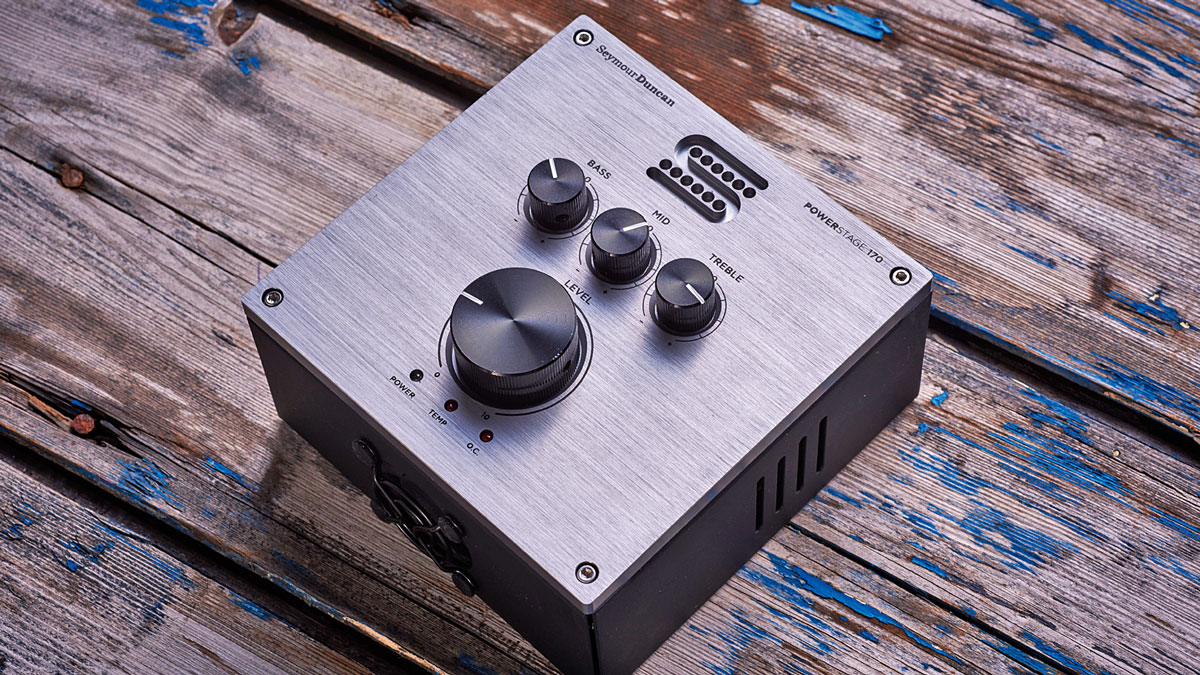
It’s got tons of headroom and despite the fact that the Mooer preamps have more of an amp-like voicing to them, for live, the PowerStage is the narrow winner. And its potential usefulness to modelling users, indeed even Le Preamp users, for driving an onstage cab should not be overlooked.
For the pure bedroom player, the combination of DI and recording outs with simple cab sim as well as headphone out makes the Le Preamp series a no brainer.
Best on a budget: Mooer Micro Preamp Series & Mooer Baby Bomb 30 power amp
4 out of 5
Best for live: Seymour Duncan PowerStage 170
4 out of 5
Best all-rounder: BluGuitar Amp 1
5 out of 5
Best for studio or home: Two Notes Le Preamp & Two Notes Torpedo CAB
5 out of 5
Alex Lynham is a gear obsessive who's been collecting and building modern and vintage equipment since he got his first Saturday job. Besides reviewing countless pedals for Total Guitar, he's written guides on how to build your first pedal, how to build a tube amp from a kit, and briefly went viral when he released a glitch delay pedal, the Atom Smasher.
